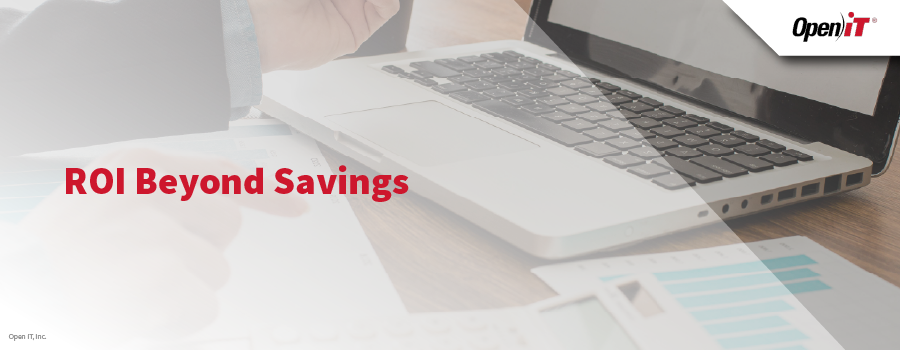Gartner projects that global software spending will increase by 10.5%, surpassing $1.2 trillion by late 2025 or early 2026. For engineering-driven industries—such as aerospace, defense, automotive, AEC, energy, and manufacturing—this growth is not driven by expanded capabilities but by rising vendor pricing.
As costs increase, organizations face the illusion of larger software budgets while the actual value extracted remains flat or declines. The result is higher expenditures with no proportional improvement in productivity, innovation, or project outcomes. To maintain ROI, organizations must treat software not as a fixed cost but as a measurable, optimizable asset.
DEMO: Stop Overspending on Engineering Software with Open iT
The Problem: Inflated Spend, Static Value
Engineering applications—CAD, CAE, PLM, simulation, modeling—are among the most expensive software assets in the enterprise. Vendors increase prices annually, often tying organizations into bundles, enterprise agreements, or tiered subscriptions that fail to reflect actual usage. Without detailed usage data, IT and procurement teams are left negotiating blind, paying for access levels and features that are rarely used.
Key issues include:
- Budget distortion – Rising license costs absorb most new allocations.
- Inefficient distribution – Power users face denials while casual users hold idle licenses.
- Vendor leverage – Lack of data gives suppliers the upper hand in renewals.
These challenges erode ROI, turning necessary software into an uncontrolled cost center.
The Solution: License Usage Analytics
Ensuring ROI requires a data-first approach to license management. Traditional metrics, concurrent usage, license counts, and peak demand, are insufficient. Modern optimization relies on:
- Granular Usage Analytics – Tracking activity at user, license, feature, and module levels.
- True Active Usage – Distinguishing between active engagement and idle checkouts.
- Data-Driven Procurement – Using factual utilization data to guide negotiations and purchasing.
This approach transforms software license management from passive reporting into active optimization.
To dive deeper into how license usage data drives smarter software decisions, join our upcoming webinar ‘Benefits of License Usage Data in Your Organization’ on October 22, 2025. Here’s your invitation.

Open iT | IAITAM
Benefits of License Usage Data in Your Organization
Granular License Usage Analytics in Practice
High-level data hides inefficiencies. For example:
- A license checked out for eight hours may show only three hours of active engagement.
- Premium modules may remain unused across large user groups.
- Some users may check out high-value licenses for minimal tasks, while critical engineers face wait times.
Granular analytics exposes these inefficiencies. With feature-level visibility, organizations can identify which modules are essential, which are redundant, and which should be retired or reallocated.
Active vs. Inactive Usage
The most impactful optimization lever is measuring actual activity. License servers only record time checked out, not whether the user is actively working. This leads to inflated demand numbers and overbuying.
By measuring true active usage—through application-level monitoring of mouse, keyboard, and feature activity—organizations gain accurate demand data. The results:
- License harvesting – Idle licenses are returned automatically, reducing denials.
- Demand accuracy – Procurement is based on real need, not overstated consumption.
- User accountability – License hoarding and camping are eliminated.
For example, an automotive manufacturer may report 90% license utilization. Once active usage is measured, only 55% is productive. The excess can be cut or reallocated, reducing costs without affecting output.
Data-Backed Vendor Negotiations
Vendors design contracts to maximize revenue. Without data, organizations accept unfavorable terms. With analytics, procurement teams negotiate from strength:
- Expose underutilization – Show that bundled modules are rarely used.
- Align licensing tiers – Match actual usage patterns to cost-effective models.
- Support consolidation – Identify redundant tools across business units.
Aerospace firms, for example, often discover they are paying enterprise rates for modules used by fewer than 5% of staff. With usage evidence, they can shift to targeted licensing, achieving the same outcomes at lower cost.
ROI Beyond Savings

Optimized license management delivers more than cost reduction. Benefits include:
- Productivity gains – Critical engineers no longer face denials.
- Operational agility – Freed budgets can be redirected to innovation.
- Audit readiness – Usage data ensures compliance without overspending.
- Sustainability – Reduced overprovisioning lowers both costs and resource consumption.
These benefits compound over time, turning rising software costs into a driver for tighter governance and higher efficiency.
Path to Optimization
Organizations seeking ROI in the face of rising software costs should adopt a structured framework:
- Baseline inventory – Map all licenses, users, and entitlements.
- Deploy monitoring tools – Track true active usage and feature-level consumption.
- Analyze patterns – Identify idle licenses, redundant modules, and hoarding.
- Optimize allocation – Reclaim and redistribute underutilized licenses.
- Leverage data – Use analytics to guide procurement and negotiations.
- Repeat continuously – ROI depends on ongoing optimization, not one-time audits.
Ensure Value for Every License
Global software costs are rising, but ROI does not need to fall. With granular usage analytics, active usage tracking, and data-driven procurement, engineering-driven organizations can counter vendor pricing, eliminate waste, and ensure every license directly supports business outcomes.
The path forward is clear: control costs with data, not assumptions.
Contact Open iT today to schedule a demo and see how data-driven license management can turn escalating costs into long-term savings and operational advantage.
See How Open iT Turns Usage Data into Real ROI.






